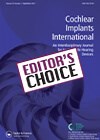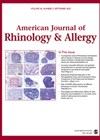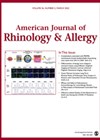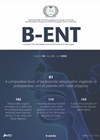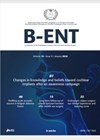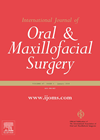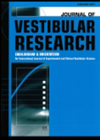
Journal Reviews
MRI scanning patients with cochlear implants and auditory brainstem implants
In the last five to six decades, MRI scanning has gone from physics experiments in Nottingham University through to Nobel prize-winning work by Sir Peter Mansfield and Paul Lauterbur, to a ‘routine’ imaging modality with an estimated 60 million MRI...
To scan or not to scan?
This comprehensive review article seeks to establish how useful is MRI in the evaluation of patients with a history of smell loss or distortion. Interestingly, while some studies found the imaging unhelpful, one paper described found a 25% rate of...
An advance in imaging for sinonasal tumours?
Benign sinonasal growths are incredibly common, and malignant sinonasal growths thankfully rare. We know that malignant tumours often present late, and the imaging can sometimes be misleading, so the authors here compare using diffusion weighted imaging (DWI), dynamic contrast enhanced...
Management of postoperative cholesteatoma
This prospective longitudinal observational study compared the ability of second-look surgery with that of surveillance using serial non-echo-planar diffusion-weighted imaging to detect residual cholesteatoma after canal wall-up mastoidectomy. A total of 34 patients were included in the study who underwent...
Paediatric idiopathic sudden sensorineural hearing loss
This Turkish retrospective study looked at the radiological and clinical characteristics, prognostic factors and treatment outcomes in children diagnosed with idiopathic sudden sensorineural hearing loss (ISSNHL). Forty-eight children were included over an eight-year period. Complete recovery (CR) was achieved in...
Is bone scanning still of value?
This is an article from Australia of 109 patients, 83 of which had CT, 72 MRI and the presence of bone invasion on imaging was compared with the histopathology. Bone invasion was present in 44 of 109 resection specimens. Bone...
Are vascular loops at the CPA of any clinical significance?
Neurotologists have grappled with this question for many years. The aim of the study was to determine the clinical relationship of vertigo symptoms with vascular loop compression syndrome using 3D T2WI turbo spin echo high-resolution MRI. The study included 417...

